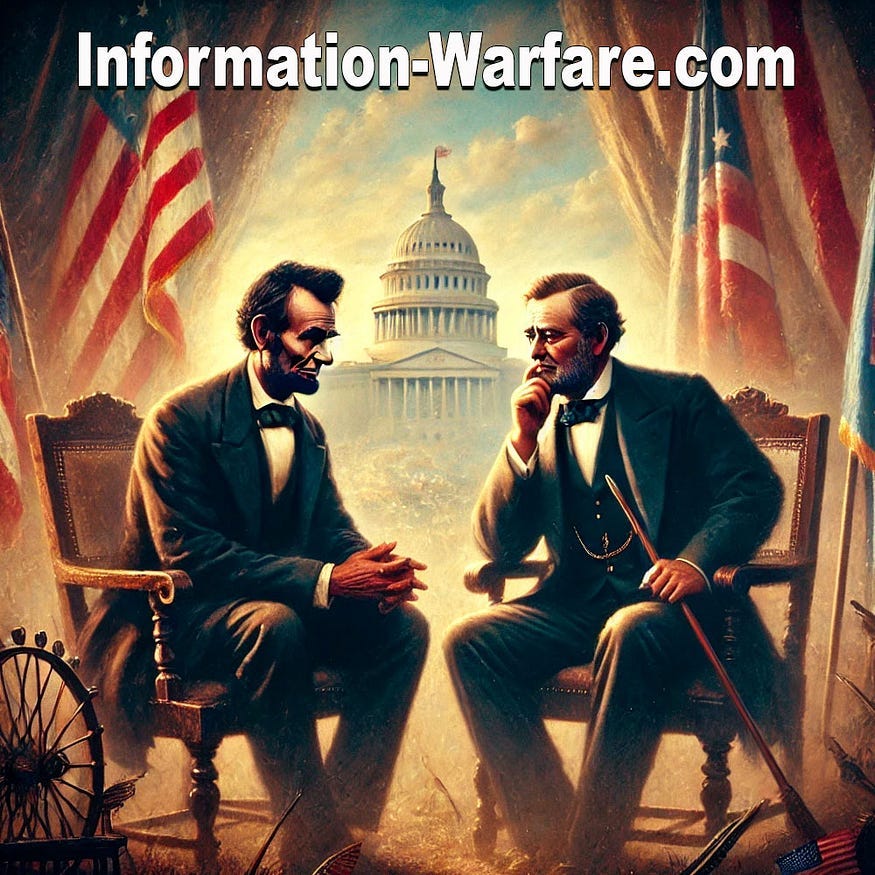Ending Reconstruction
The Unfinished Business of America’s Civil War
More than a century and a half after the end of the Civil War, the United States still grapples with the legacy of that conflict. The war, which was fought over the deeply entrenched institution of slavery, ended in 1865 with the defeat of the Confederacy. However, the work of rebuilding the nation and addressing the deep divisions left in its wake — known as Reconstruction — remains unfinished. Today, the symbols and ideologies of the Confederacy continue to influence American politics and society, underscoring the need to finally close this chapter of our history once and for all.

Lincoln and Grant’s Vision for Reconstruction
When the Civil War ended, President Abraham Lincoln and General Ulysses S. Grant had a vision for how to reunite the nation and heal its wounds. Lincoln’s plan for Reconstruction was rooted in the principles of reconciliation and unity. He believed that the best way to bring the country back together was to offer a path to reintegration for the Southern states, provided they accepted the end of slavery and pledged loyalty to the Union.
Lincoln’s approach was known as the “10 Percent Plan,” which allowed for the re-admission of a seceded state once 10 percent of its voters took an oath of allegiance to the Union and agreed to abide by emancipation. This was a lenient approach, designed to foster goodwill and avoid further bloodshed. Lincoln understood the importance of addressing the rights and freedoms of newly emancipated Black Americans, and he envisioned a Reconstruction that would include the protection of these rights as an integral part of the nation’s healing process.
To further his goal of national unity, Lincoln made a significant political decision: he chose a Democrat, Andrew Johnson, as his running mate in the 1864 election. Johnson, a Southerner from Tennessee, was intended to help bridge the divide between North and South and to show that the Union could include all Americans, regardless of their pre-war loyalties.
The Assassination of Lincoln and the Disruption of Reconstruction
However, the course of Reconstruction took a drastic turn after Lincoln’s assassination in April 1865. With Lincoln’s death, Vice President Andrew Johnson assumed the presidency. Johnson, who had been chosen for his potential to unify the country, quickly revealed himself to be deeply unsuited to the task of Reconstruction. His policies reflected his Southern sympathies and a leniency toward former Confederates that contradicted the more robust vision that Lincoln and Grant had begun to develop.
Johnson’s approach to Reconstruction was marked by his opposition to civil rights for newly freed slaves and his willingness to restore political power to former Confederates. He vetoed key legislation designed to protect the rights of Black Americans, including the Civil Rights Act of 1866, and he opposed the 14th Amendment, which granted citizenship and equal protection under the law to all people born in the United States.
This leniency allowed white supremacist groups, such as the Ku Klux Klan, to emerge and thrive in the South. These groups sought to maintain the racial hierarchy that had been entrenched by slavery, using violence and intimidation to oppress Black Americans and undermine their newly won freedoms. The failure to fully implement Lincoln’s and Grant’s vision for Reconstruction enabled these regressive forces to take root and grow, perpetuating the very divisions that the Civil War had been fought to resolve.
The fact that the Confederate flag is still displayed in public spaces, paraded at political rallies, and used as a symbol of defiance against racial equality efforts speaks to the deep-seated issues that remain unresolved from the Civil War.
The Enduring Legacy of the Confederacy
One of the most visible symbols of this unfinished business is the Confederate flag. Unlike the Nazi flag, which is widely recognized as a symbol of hate and oppression, the Confederate flag has been allowed to persist as a symbol of “Southern heritage” in many parts of the United States. This has been a point of contention and controversy, as the flag represents not only the Confederacy’s fight to preserve slavery but also the broader legacy of racism and white supremacy.
The fact that the Confederate flag is still displayed in public spaces, paraded at political rallies, and used as a symbol of defiance against racial equality efforts speaks to the deep-seated issues that remain unresolved from the Civil War. The persistence of this symbol — and the ideologies it represents — suggests that the Civil War and Reconstruction are not just historical events, but ongoing struggles in the American consciousness.
Ending Reconstruction means more than just removing Confederate flags from public spaces — it requires a broader rejection of the ideologies and symbols of the Confederacy.
The Need to Finally End Reconstruction
Today, as America confronts its history of racial injustice and the ongoing influence of Confederate ideology, there is a growing recognition that the work of Reconstruction was never truly completed. To fully heal as a nation, we must acknowledge and address the ways in which the legacy of the Confederacy continues to shape our politics and society.
Ending Reconstruction means more than just removing Confederate flags from public spaces — it requires a broader rejection of the ideologies and symbols of the Confederacy. It means confronting the ways in which these ideologies have influenced our laws, our institutions, and our culture. It means committing to the principles of equality, justice, and unity that Lincoln and Grant sought to enshrine in the post-war period.
This process involves not only legal and political changes but also a cultural shift. It requires us to re-examine the narratives we tell about our history, to honor the struggles and contributions of those who have fought for civil rights, and to ensure that the promises of Reconstruction — citizenship, equal protection under the law, and the right to participate fully in American society — are fulfilled for all people.
Unless we, as Americans, collectively put behind us our troubled past and learn to love America for what it is — not what we want it to be — our adversaries, like Russia and others, will exploit these unresolved divisions to weaken us.
A Call to Action
The time has come for America to finally end Reconstruction and close the chapter on the Civil War. This means rejecting all ties to Confederate thought processes and ensuring that the ideologies of hate and division that fueled the war are relegated to the past. It means committing to a future in which all Americans — regardless of race, background, or creed — are treated with dignity and respect, and where the principles of democracy and equality are upheld.

However, the stakes are even higher in the modern era. Unless we, as Americans, collectively put behind us our troubled past and learn to love America for what it is — not what we want it to be — our adversaries, like Russia and others, will exploit these unresolved divisions to weaken us. In an age where information is a powerful tool and misinformation is a weapon, these unresolved historical issues become vulnerabilities. Adversarial nations can and will use these divides to sow discord and division, fracturing the very fabric of our society in an information wave designed to destabilize our democracy.
In doing so, we can fulfill the vision of Lincoln and Grant, bringing the nation together in a spirit of unity and reconciliation. By confronting the unfinished business of Reconstruction, we can protect ourselves against these external threats, and move forward as a stronger, more just, and more united America. The choice is ours: to let the past continue to divide us, or to come together, embrace our shared values, and build a future where democracy and equality prevail for all.



